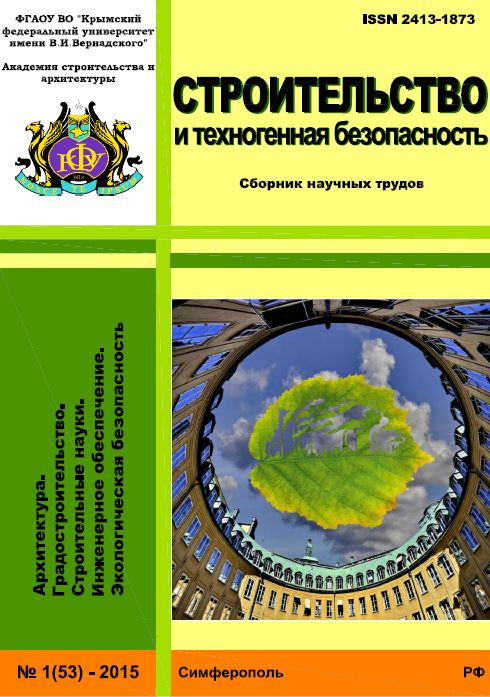This article presents the results of factory tests to determine the effectiveness of carbonation of a raw mixture and freshly molded products in the production of vibropressed paving slabs. During carbonation of the raw material mixture, carbon dioxide is used as an additive to concrete as a percentage of the binder weight. The carbonation of freshly molded products was carried out in a gas-air mixture with a certain concentration of CO2. The kinetics of strength gain of finished products over the course of 28 days, as well as density and water absorption indicators, were determined. Subject of research: the effect of carbonation of the raw material mixture and freshly molded products on the physical and mechanical properties of vibropressed paving slabs. Materials and methods: rigid concrete mix using CEM II/A-Sh 42.5N slag-portland cement as a binder. The mixture is prepared in an industrial planetary mixer with a volume of 1.1 m3. Paving slabs are made on a vibro-impact industrial press with a molding field of 1300*900 and a disturbing force of 140kN. The supply of the required amount of CO2 to the mixer and to the strength-building chamber was quantitatively controlled using floor scales. Compressive strength tests were carried out in the laboratory of the enterprise using a concrete press IP-1500 according to GOST 28570-19. The water absorption of the samples was determined in accordance with GOST 12730.3-2020. Results: during production tests, an increase in the strength of vibropressed concrete products placed in a freshly molded state in a carbon dioxide chamber was revealed. The increase in strength at the age of 28 days compared to the sample that had not undergone carbonation was 15.6%. The maximum effect was found during carbonation of the raw material mixture and freshly molded products. At the age of 28 days, the strength was 36.5 MPa, which is 20.9% higher than in non-carbonized products. Conclusions: Carbon dioxide as an additive to the raw material mixture showed the properties of an accelerator additive for concrete hardening at the age of up to 3 days. The increase in strength on day 1, compared with non-carbonized samples, was 21.8%. The use of CO2 as a component of the gas-air mixture in the hardening chamber provided an increased increase in the strength of the products. The minimum water absorption rate was 4.7%, which is 27.7% less than that of the control samples. The combined use of carbonation of a concrete mixture and a freshly molded product leads to an increase in the final strength of concrete at the age of 28 days from 30.2 MPa to 36.5 MPa, with a steadily increasing kinetics of strength gain.
carbon dioxide, carbonation of concrete mix, carbonation of freshly molded product, kinetics of strength gain, crete mix, paving slabs
1. Lyubomirskiy N.V. Nauchno – tehnologicheskie principy utilizacii uglekislogo gaza v biopozitivnye stroitel'nye materialy / N.V. Lyubomirskiy, S.I. Fedorkin // Biosfernaya sovmestimost'
2. MonkmanS. Ispol'zovanie uglekislogo gaza v kachestve dobavki-uskoritelya / S. Monkman// Cement i ego primenenie. – 2017, №1. - S.32-42.
3. Berger R.L. Acceleration of hydration of calcium silicates by carbon-dioxide treatment // Nature: Physical Sci. – 1972, Vol. 240. - P. 16—18.
4. Ruzavin A.A. Primenenie metoda uskorennoy karbonizacii v tehnologii betonnogo proizvodstva /A.A. Ruzavin// Vestnik YuUrGU. Seriya «Stroitel'stvo i arhitektura». – 2017. - №3. – C. 72–75.
5. KorchunovI.V. Ispol'zovanie betonoloma dlya proizvodstva melkoshtuchnyh izdeliy karbonatnogo tverdeniya /I.V. Korchunov // Cement i ego primenenie. – 2023. - №4. –S.26-35.
6. Lyubomirskiy N.V. Issledovanie vliyaniya rezhimov prinuditel'nogo karbonatnogo tverdeniya na svoystva materialov na osnove izvestkovo-izvestnyakovyh kompoziciy polusuhogo pressovaniya
7. LippiattN. Combininghydrationandcarbonationofcementusingsuper-saturatedaqueousCO2solution // ConstructionandBuilding Materials. -2019, Vol. 229. - P. 11-25.
8. Bahtina T.A.Poluchenie stroitel'nyh materialov na osnove stroitel'nyh materialov na osnove dolomitovoy izvesti uskorennogo tverdeniya za schet prinuditel'noy karbonizacii/T.A. Bahtina
9. Romanenko I.I. Uskorennaya karbonizaciya formovok iz staleplavil'nyh shlakov s cel'yu polucheniya izdeliy stroitel'nogo naznacheniya /I.I.Romanenko //Dnevnik nauki. -2023. - № 10. –S. 15-21.
10. Gil'mutdinov T.Z. Rezul'taty issledovaniy po uskorennoy karbonizacii betona i cementnogo kamnya vo vlazhnyh usloviyah ekspluatacii /T.Z.Gil'mutdinov //Izvestiya Kazanskogo gosudarstvennogo
11. Fu X. Hranenie CO2 pri ukreplenii betona putem karbonizacii ego cementa v suspenzii /X. Fu // Kommunikacionnye materialy. -2024.- №5. – R. 109.
12. Fedorov P.A. Osobennosti uskorennoy karbonizacii betonov na osnove schelochno-schelochnozemel'nyh vyazhuschih /P.A. Fedorov // Stroitel'nye materialy. 2024. -№ 11. - S. 40–47.
13. Ivanov A.V. Trotuarnaya plitka na osnove kompozicionnogo shlako-cementnogo vyazhuschego: dissertaciya kand. tehn. nauk: 05.23.05 / Ivanov Anton Vladimirovich - Belgorod, 2011. - 151 s.





